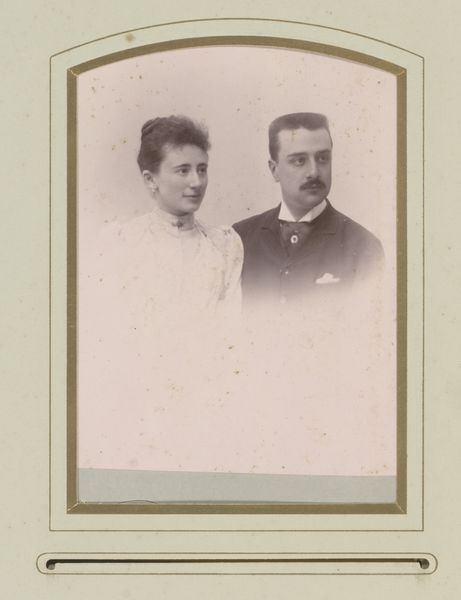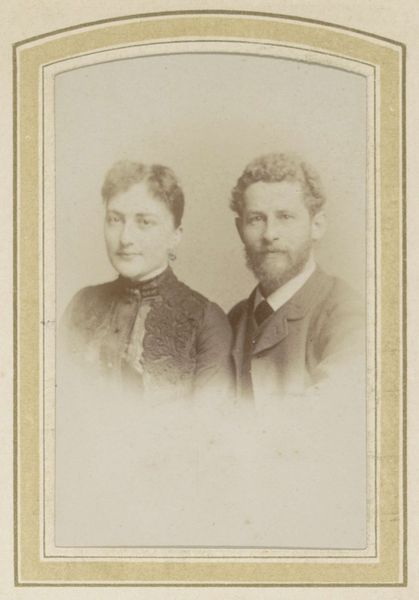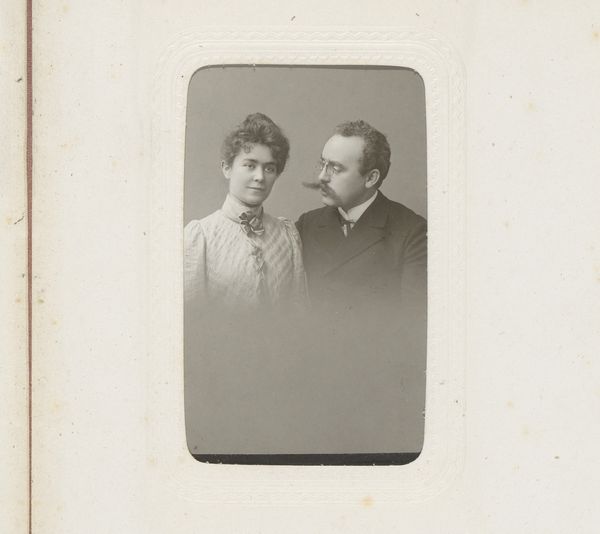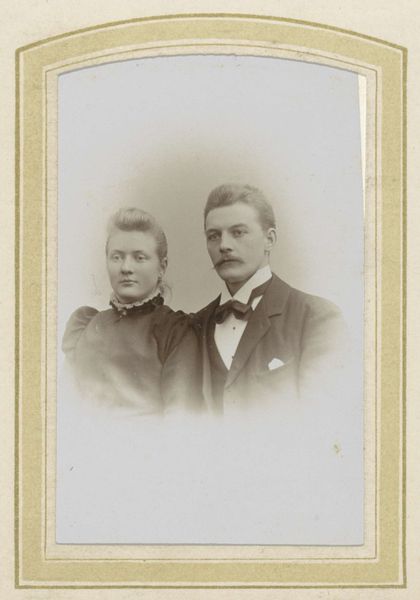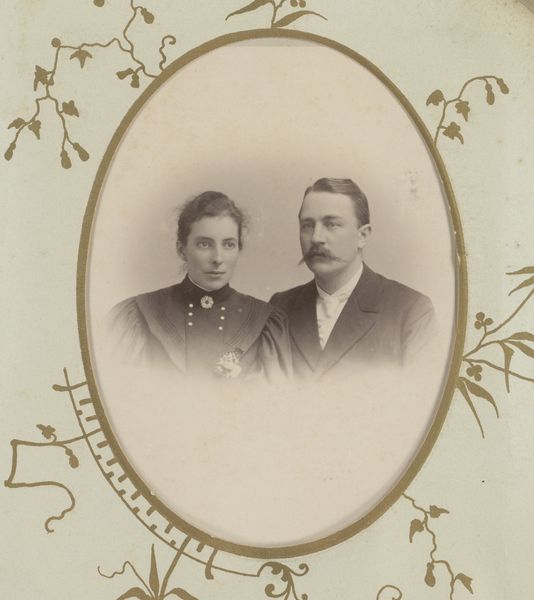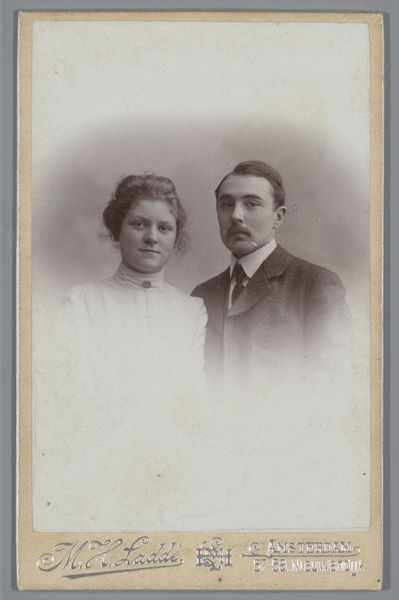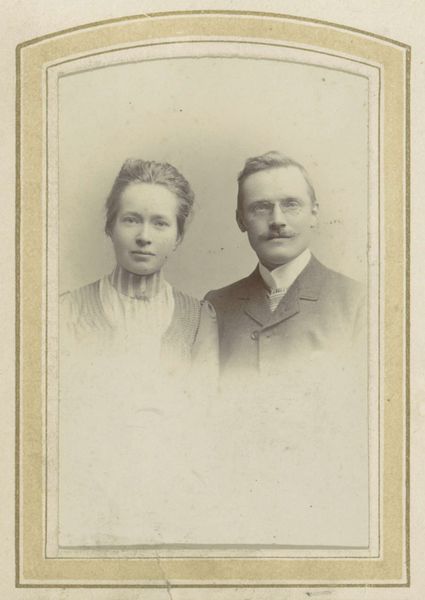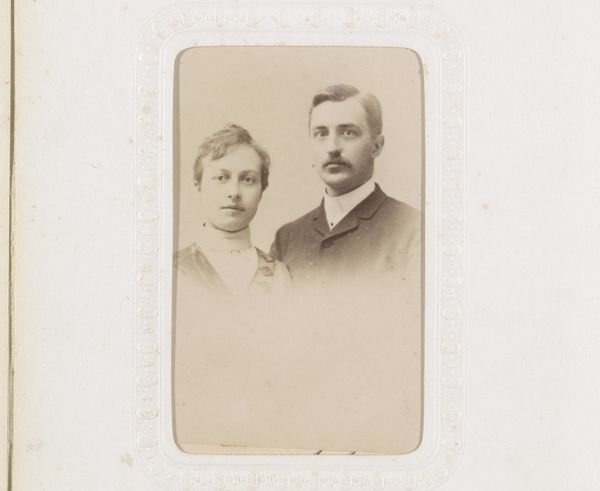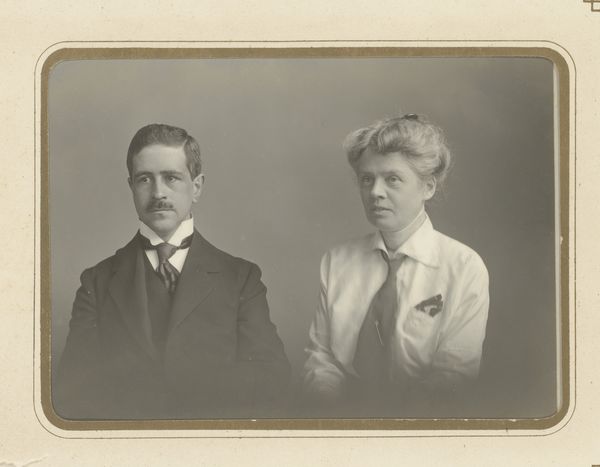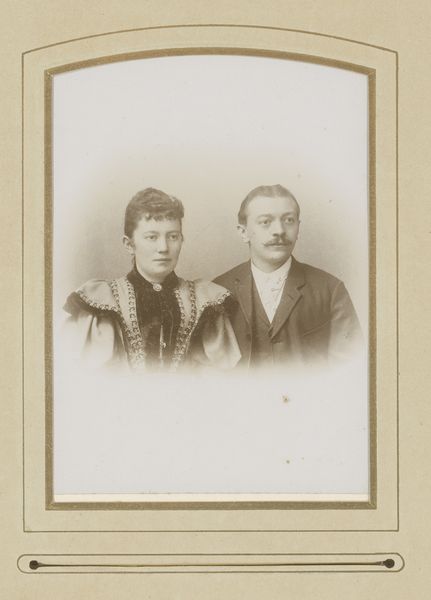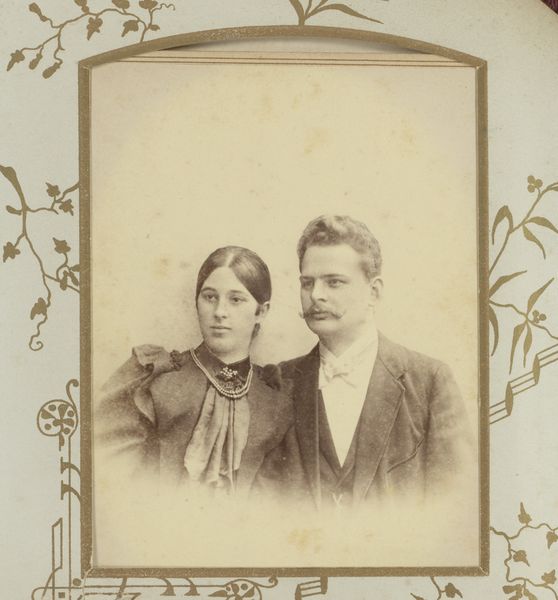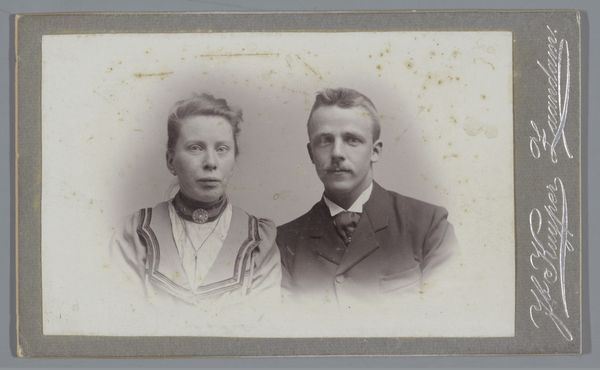
photography, gelatin-silver-print
#
portrait
#
photo element
#
photography
#
group-portraits
#
gelatin-silver-print
#
portrait drawing
Dimensions: height 83 mm, width 53 mm
Copyright: Rijks Museum: Open Domain
Editor: This is "Portret van een vrouw en een man" – Portrait of a Woman and a Man – by Albert Greiner, probably created sometime between 1874 and 1887. It’s a gelatin silver print, and something about its almost ethereal quality makes it seem incredibly formal and staged. What can you tell me about the role portraiture played during this time period? Curator: You've rightly picked up on the formality. This type of photographic portraiture really solidified its place as a marker of social standing and aspiration for the burgeoning middle class in the late 19th century. Think about it – photography democratized image-making, but also provided new ways to reinforce existing social hierarchies. Consider the framing, their clothing, and their composed expressions. How do those choices communicate certain ideals? Editor: Well, their formal attire certainly indicates a level of economic comfort and respectability. The crisp suit on the man, and the woman's patterned blouse with a delicate necktie... But is it also saying something about their roles within society, gender roles specifically? Curator: Exactly. Notice how their poses reinforce conventional ideas about masculinity and femininity. The man projects a stern almost patriarchal air. These images, while personal, were deeply embedded in societal expectations. Where would a family display this photograph, and what purpose would it serve in the family and broader social context? Editor: Likely, it would be displayed in a parlor to project social standing to guests, or it would act as a sentimental familial keepsake… This portrait speaks volumes about the rise of the middle class, but also about the very constructed nature of identity in that period. I now see beyond just two people but into the nuances of that era. Curator: Precisely. By understanding how institutions, in this case photographic studios, and social expectations shaped the production and reception of art like this portrait, we gain a deeper appreciation for its historical significance.
Comments
No comments
Be the first to comment and join the conversation on the ultimate creative platform.
